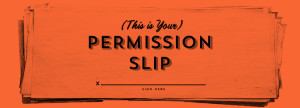Jaye Wells's Blog, page 6
July 5, 2016
Update
 I’m finally back home after a whirlwind, two-week trip. First, I went to Greensburg, PA to do my final MFA residency at Seton Hill. That week culminated with my thesis defense and graduation. My husband came up for the festivities and surprised me by showing up with my mom and step-father. I am notoriously hard to surprise, but they managed it somehow. It was great to have my own little cheering section at the ceremony. I even made it through without too many tears, although I’d be lying if I said there were none.
I’m finally back home after a whirlwind, two-week trip. First, I went to Greensburg, PA to do my final MFA residency at Seton Hill. That week culminated with my thesis defense and graduation. My husband came up for the festivities and surprised me by showing up with my mom and step-father. I am notoriously hard to surprise, but they managed it somehow. It was great to have my own little cheering section at the ceremony. I even made it through without too many tears, although I’d be lying if I said there were none.
 The day after graduation, the four of us headed to Fallingwater for the day. In college, I studied art history with a concentration on American art and architecture so this was a major deal. It’s about as close to a religious experience as I get (outside of libraries and bookstores), and I might have cried there, too. Let’s just say it was an emotional week in a great way all around.
The day after graduation, the four of us headed to Fallingwater for the day. In college, I studied art history with a concentration on American art and architecture so this was a major deal. It’s about as close to a religious experience as I get (outside of libraries and bookstores), and I might have cried there, too. Let’s just say it was an emotional week in a great way all around.

Beautiful Pittsburgh

Gorgeous sky over Appalachia
After having the esteemed Dr. Nicole Peeler play party host and tour guide in Pittsburgh, we said goodbye to my parents and headed down to Virginia for a few days. Near Charlottesville, there is a great area with lots of wineries and great restaurants and some of the nicest folks you’ll ever meet. We got to attend a talk and interview with Butch Taylor and Stuart Gunter, both wonderful musicians and very friendly people. We also bought some gorgeous photographs by Steve Edgar, who is both a talented photographer and a musician. And, of course, there was lots of wine “tasting” and delicious food eating. It was a pretty perfect trip all around.
Now I’m back home and settling in for my post-MFA life. I’m already working on a couple of new projects because working keeps me out of trouble. I’m also looking forward to more time to read for pleasure, a luxury I wasn’t afforded for the last two-and-a-half years of graduate school. Of course, I’m always reading about five books at a time and some of those are research for a secret project.
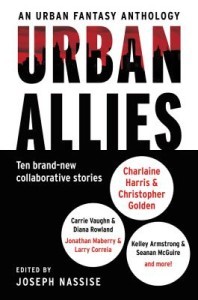 Coming up this month, the URBAN ALLIES anthology is coming out. I’m super excited about this one. They took several bestselling urban fantasy authors, paired us up, and had us write cross-over stories that combined our worlds. I co-wrote a story called Ladies’ Fight with Caitlin Kittredge that combines Ava from her Hellhound Chronicles and my own Sabina Kane. I can’t tell you how much fun it was to write Sabina, Adam and Mr. Giggles again. I think you’ll love that story and all of the amazing offerings from Charlaine Harris and Christopher Golden, Jonathan Mayberry, Kelley Armstrong, Seanan McGuire, and so many other talented UF authors.
Coming up this month, the URBAN ALLIES anthology is coming out. I’m super excited about this one. They took several bestselling urban fantasy authors, paired us up, and had us write cross-over stories that combined our worlds. I co-wrote a story called Ladies’ Fight with Caitlin Kittredge that combines Ava from her Hellhound Chronicles and my own Sabina Kane. I can’t tell you how much fun it was to write Sabina, Adam and Mr. Giggles again. I think you’ll love that story and all of the amazing offerings from Charlaine Harris and Christopher Golden, Jonathan Mayberry, Kelley Armstrong, Seanan McGuire, and so many other talented UF authors.
Preorder Urban Allies now!
Indiebound | Amazon| B&N | iBooks | Kobo
But that’s not all!
I’m also working on a print version of my second Meridian Six story, Children of Ash. The ebook has been out for a while, but I’ve been getting loads of emails asking for print, too. Hopefully that will be ready to buy in the next couple of weeks. If you’re curious about that series, click here for a blurb and free preview of both books.
I hope summer is treating you all well. Happy reading!
May 26, 2016
Craft Thursday: The Lists
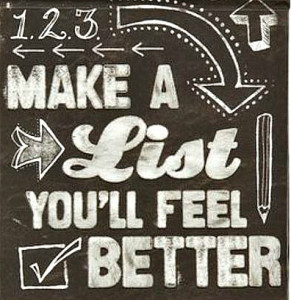 It’s pretty common in my workshops for me to suggest writers make lists of words for their stories. It’s a technique I learned from Alexander Sokoloff’s Screenwriting Tricks for Novelists. In the book, she recommends that authors make lists of thematic words relating to their story and characters that can be woven through the narrative to add more emotional resonance and create image systems. It’s a great technique that I use for my own novels.
It’s pretty common in my workshops for me to suggest writers make lists of words for their stories. It’s a technique I learned from Alexander Sokoloff’s Screenwriting Tricks for Novelists. In the book, she recommends that authors make lists of thematic words relating to their story and characters that can be woven through the narrative to add more emotional resonance and create image systems. It’s a great technique that I use for my own novels.
Recently, I picked up Ray Bradbury’s Zen in the Art of Writing. I’ve been sipping from this font of writerly knowledge a bit at a time, giving myself time to digest each essay. Bradbury has long been a favorite writer of mine, and I’m not sure why it took me so long to find this book, but I sort of feel like it came into my life at the perfect time. Aren’t books magic that way?
Anyway, one of Bradbury’s techniques reminded me of the word lists I mentioned above. According to Bradbury, for years, he kept running lists of words. When he needed to sit down to write a short story, he’d look at that list, choose a word and start writing. The idea that we each have our own unique image system that can be used to find story ideas sort of blew my mind.
Lately, I’ve been in a weird space. I finished a novel a couple of months ago that took me two years to write. I want to write, but the idea of diving headlong into another huge project so soon feels daunting. The well needs some time to refill. However, I have a book on submission and lots of time of my hands now that I’ve finished most of my grad school coursework. Idle time is dangerous for an imagination. But then Bradbury and his word list offered me the perfect solution. Why not just write my own list and use it to write some shorts of my own? Not because I’m supposed to be writing, but because I want to be writing.
An interesting thing happens when you start to make these lists. Following Bradbury’s example, I formatted my list with “the” in front of each noun, e.g. “The Moon,” “The Tomb,” “The Hallway.” It’s a fun exercise to sit down and see how one image leads to others and before you know it, you have this neat list of all the images that your subconscious loves or fears. So far, my list is four pages long. That’s material for a LOT of stories.
Also? It’s fascinating to see what’s coming up. Images appear like words in the those Magic Eight Balls. They sort of emerge from the depths of my brain before sinking down below again. Paying attention to what’s coming up has been enlightening and has helped me really get a handle on my own personal image system. Meaning, the themes and images I go back to over and over again in my stories–the symbols that make up a large part of my writer voice. The ideas that fascinate and scare me enough to keep returning to them over and over in my work.
I feel sort of silly that it didn’t occur to me to apply the word lists I used for my novel to other things, but that’s sort of how this writing thing goes. The tools you think you’ve mastered have a way of evolving into new uses. I’m excited to see what sort of short stories come out of this, and even ore excited to see how my list of images grows and changes over the years as I become fascinated by or afraid of new things. As I fall in love with new ideas and characters and places.
So I guess today’s craft advice is twofold:
1. Always be open to using old tools in new ways.
2. If you pay attention, the mentors you need will appear right when you need them.
Happy writing!
May 20, 2016
Authornomics Interview
I recently sat down for an interview with Authornomics to discuss the writing life and my career.
Here’s a sneak peek:
You’ve written about writers needing to be more flexible. What strategies do you have for writers who are looking to get out of their comfort zone? Do you ever struggle with flexibility? Why is being flexible so important?
Flexibility is important in that every book offers new challenges. The more tools a writer has in their toolbox, the easier it is to duck and weave when new problems pop up. I also think we have to be less invested the in the mythologies we create about our writing. If you tell yourself that “real writers” don’t do this or that you could be actively working against your own progress. We get too invested in “shoulds” and acting like writing has to feel like punishment to be legitimate that we forget that writing can and should be fun a lot of the time. Being flexible allows more space for play.
May 19, 2016
May 12, 2016
Craft Thursday: Inspiring Yourself Into Inertia
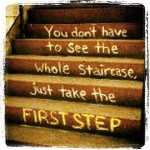 I just spent half an hour watching videos about creativity. They’re fun, right? They make us feel better–like we’re improving ourselves even as we sit on our rear ends and passively absorb their wisdom.
I just spent half an hour watching videos about creativity. They’re fun, right? They make us feel better–like we’re improving ourselves even as we sit on our rear ends and passively absorb their wisdom.
Maybe that’s why you come here to read my Craft Thursday posts or watch my Youtube videos. You want to improve yourself. You’re committing to your craft by seeking out tools and resources and inspiration.
That’s all well and good. It’s great, in fact. But only if you get to the moment where you turn off your web browser, open a blank page, and put words on it. Even better if you do this every or most days.
The truth is that if you’re not careful you will inspire yourself into inertia. You will convince yourself that you will write eventually once you’ve learned all there is to know about writing. Once you’ve improved yourself enough you will finally be ready.
Well, my friends, the truth is that the true path of improvement and inspiration is the path of doing. It is the path of trying. It is making a practice out of your art. Isn’t it nice to think of writing that way–as a practice? There is no blog post I could write, there is no Youtube video, there is no craft book that will finally tip you over into being ready. You become ready by working when you’re not ready. By practicing.
So today, I want you to promise yourself that you will spend half an hour putting the pen to page. It doesn’t matter if you write a short story, a poem, or a snippet of dialogue. Write something. Practice the craft. Inspire yourself, improve yourself, and inform yourself by doing the damned thing.
Happy writing.
J.
May 5, 2016
Craft Thursday: Must-Read Craft Books
When I’m teaching writing classes, I tend to mention the same craft books over and over. So for today’s Craft Thursday, I thought I’d share the titles with you and why I like them. This is by no means an exhaustive list of every good craft and writing life book I’ve read. It’s just a list of the ones I name-check most.
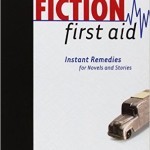 1. Fiction First Aid Raymond Obstfeld: Great overview of common problems that plague a lot of manuscripts. Good to read prior to revision to help diagnose problems. I don’t think I read this straight through, but I’ve referred to it again and again over the years.
1. Fiction First Aid Raymond Obstfeld: Great overview of common problems that plague a lot of manuscripts. Good to read prior to revision to help diagnose problems. I don’t think I read this straight through, but I’ve referred to it again and again over the years.
2. Writing & Personality by John K DiTiberio & George Jensen: This book used Meyers-Briggs personality to help explain how each type approaches large writing projects. I can not overstate how much this book did to help me find my process. I reread the section on my time at least twice a year–or whenever I try to convince myself that I’d have an easier time if I plotted (hint: I wouldn’t). Note: I’ve had trouble finding new copies of this book, but you might get lucky and run into at a used book store.
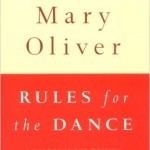 3. Rules for the Dance by Mary Oliver: I don’t know why it took me so long to discover Mary Oliver’s poetry, but now that I have, I’m totally in love. This book is Oliver’s primer on writing and reading metrical verse. You might have learned some of the information about meter in high school, but if you’re like me, the only one you could reliably name was “iambic pentameter.” I suggest this book because understanding the rhythm of language will help your prose crackle with emotion and texture. If you don’t read this book, you should at a minimum start trying to read more poetry and music lyrics. Trust me, it will help you become a better writer.
3. Rules for the Dance by Mary Oliver: I don’t know why it took me so long to discover Mary Oliver’s poetry, but now that I have, I’m totally in love. This book is Oliver’s primer on writing and reading metrical verse. You might have learned some of the information about meter in high school, but if you’re like me, the only one you could reliably name was “iambic pentameter.” I suggest this book because understanding the rhythm of language will help your prose crackle with emotion and texture. If you don’t read this book, you should at a minimum start trying to read more poetry and music lyrics. Trust me, it will help you become a better writer.
4. The War of Art by Steven Pressfield: This is not a craft book–it’s a writing life survival manual. I probably have as many books about how to survive being a writer as I do how to become a better one. This is a great, easy-to-read book that is worth rereading at least once a year.
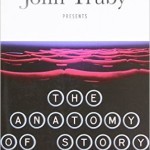 5. The Anatomy of Story by John Truby: Truby’s background is in screenwriting, but the way he constructs his stories is very similar to my own process. By that I mean, he advocates an organic approach. Instead of plotting, the prework here is focused on character creation and world building. The book is filled with writing exercises and great advice. It can be a bit dense, but it’s definitely worth a read.
5. The Anatomy of Story by John Truby: Truby’s background is in screenwriting, but the way he constructs his stories is very similar to my own process. By that I mean, he advocates an organic approach. Instead of plotting, the prework here is focused on character creation and world building. The book is filled with writing exercises and great advice. It can be a bit dense, but it’s definitely worth a read.
6. Characters & Viewpoint by Orson Scott Card: Character creation is one of my strengths, but I read this because I was writing a book with multiple POV characters and wanted to be sure I wasn’t missing anything. He introduces both topics in a clear way that’s great for newer writers. However, for my money, the best thing in this book is Card’s MICE Quotient. I won’t tell you what it is, but it sort of blew my mind.
What are your favorite craft books?
April 28, 2016
Craft Thursday: Permit Yourself
One of the best skills you can foster as a writer is that of self-permission. I’m not talking about rationalizing destructive behavior or justify crappy choices. Instead, you need to learn how to stop looking toward society, your friends and family, etc for permission to follow your instincts.
The greatest gift I gave myself as a new writer was permission to be a novice. After beating myself up for not writing brilliant prose and force-feeding myself every nugget of advice I could find from the experts, I finally threw up my hands and admitted that I wasn’t supposed to be good yet. I’d never written a book before, so how could I expect to be good at it?
Giving myself permission to be a beginner opened a door inside me. Suddenly, I was free to play and experiment. To laugh at myself in a good-natured way. More importantly, it allowed me to complete my first novel. I told myself I just needed to get it down. It didn’t have to be good–it just had to be done.
Since then, I’ve had to give myself permission to do lots of other things I found scary. I gave myself permission to go back to grad school even though everyone thought it was crazy. I gave myself permission to write a new genre. I even gave myself permission to take a break when I felt burned out.
The point is that your creative life is your responsibility. There is no fairy craft mother who’s going to point you on the right path or look out for you. More likely, you will run into lots of people with their own agenda or products to sell who are great at pretending to be looking out for you. Long-term happiness in the creative entrepreneur life requires that you get good at becoming your own advocate. It requires the courage to give yourself permission to make choices that go against conventional wisdom and to ignore the voices of people who are terrified you’ll be the crab to escape the pot.
It also requires that you get very honest about why you’re doing this. Are you writing because you want to be a millionaire (best of luck with that, friend) or are you writing because telling your story is as critical to your existence as oxygen. Maybe you fall somewhere in the middle (most of us do), and you need to decide where your hard lines exist and where you’re willing to compromise. If you’re in this for money, give yourself permission to ignore the people who are in it for art, and vice versa. Repeat after me: The existence of a different approach is not an indictment of your approach.
So, my friends, tell me: What scary writing thing did you have to give yourself permission to do?
April 20, 2016
Craft Thursday: Jaye’s Office Hours
This week, I wanted to let you know that I’ve started a new thing called “Jaye’s Office Hours.” Since I can’t get everywhere to teach writing classes or speak about my books, I decided to use vlogging to get some of my lessons out there. Jaye’s Office Hours won’t just be about craft. I’ll also answer questions about my stories and do virtual readings, etc.
Here’s my most recent vlog, where I discuss the three types of research I use to write my books.
Be sure to subscribe to my channel so you don’t miss any of the videos. Also, if you have a topic you’d like for me to tackle or a question about my writing or how to write, let me know in comments!
April 14, 2016
Craft Thursday: The Juice Is Worth the Squeeze
Writers are pretty silly. We indulge in a lot of magical thinking and we believe people when they tell us there’s a right way to write. This is why, from very early in my career, I believed I needed to write a book linearly. I learned this method from my first critique group, which was filled with published authors. They were pros, I reasoned, they know what’s up. So I plotted and I wrote my books in order.
When I began submitting to agents, the feedback was all sort of similar, “You say this is a single-tile, but it reads like a category romance.” All of my critique partners wrote category romance and they were the ones who drilled into me that I need to plot their way.
Eventually, I left that group. My exit had been coming for a while, but the final nail in the coffin was when they urged me to walk away from the book I was working on–a little Urban Fantasy called Red-Headed Stepchild that would later land me a six-figure, multi-book contract and make it onto the USA Today Bestseller list. I harbor no ill will toward those critique partners because I learned a lot from them, including when to walk away from a situation that was not doing my writing any favors.
After I got my deal and had to write the second book in the series, I stumbled for a long time. I’d written three novels by that point, but I didn’t understand my writing process. Cue two total rewrites that resulted in one of the most stressful periods of my life. It was only once my editor called me and said, “What happens when you start writing a book?” that I gave any real thought to how my mind processed story. The first version of Mage in Black was a mess because, terrified and self-conscious of performing under pressure, I resorted to plotting and linear writing because it was what the published authors I’d known in that critique group had done. The result was a terrible, formulaic book that lacked all the heart that RHSC had going for it.
When I began to talk through my process with my editor she exclaimed, “Oh! I get it–you’re a scene writer. I’ve worked with someone else like that. Here’s what you need to do … ” See, until that moment, I only knew of two types of writers: plotters and pantsers.What I learned from my editor that day is that false dichotomy was screwing me up. I had no idea it was okay to be some sort of combination of the two, which, I’ve since found, most of us are.
It’s sort of like saying, “there are two types of people: those who like night and those who like day.” It completely ignores the wondrous nuances that exist in a 24-hour period–dawn, midday, noon, afternoon, L’heure Bleu, dusk, evening, night, midnight, etc. In other words, you might have a tendency toward writing by the seat of your pants, but your version of pantsing is probably different from every other pantser out there.
My editor called me a scene writer, but I’ve since amended it to being a “puzzler.” Yes, I write my books as discrete scenes and I write them out of order. Some might say, yeah, that’s classic pantser. But, my friends, those people would be wrong. Pantsers are notorious for diving right into a story without any preparation. In fact, I do a lot of pre-work on my books. It’s just that instead of charting out each beat of the story, I prework by focusing first on world building and character development. I fill my subconscious with as much information as I can about the world and characters as I can so that while I’m writing I have a ton of material that informs my choices. The first hundred or so pages of my books (sometimes way more than that) are a frenzy of scene writing with no regard to structure. It’s almost like writing a bunch of short stories about the characters. This period is me working totally on inspiration. I let my subconscious play until it starts to run out of fresh ideas. Then, and only then, do I start to plot. I take that collection of scenes and place them on a storyboard. Then I started shuffling them around (puzzling) until the story reveals itself to me. Once I have a pretty good idea of the structure, I fill it in with all the scenes I’m missing.
Look, I know this isn’t the easiest process or the most logical, but it’s how I best create stories. When I try to work against this process, my stories are terrible. That’s because when I don’t allow my imagination to drive the process, I default to formula to create structure. That’s no bueno, my friends.
I’m not sharing this because I think you should write stories the way I write them. Instead, I simply want to suggest to you that if you’re stuck, you might be struggling to understand your own process. Alternately, if you’re a plotter and find yourself hitting roadblocks, maybe try to shake things up a little. If you can’t write the next logical scene, jump ahead to another chapter or scene you know is coming. Sometimes we think we’re linear writers when we’re not. You can be a plotter and easily write your scenes out of order because you already have the plan in place. Or, if you write by the seat of your pants, maybe just do a quick sketch of what you think the scene you’re about to write is really about. That might speed things up a bit.
Bottom line: You have to go where the juice is, and to get there you have to understand your process (the squeeze).
You’ll know the juice when you see it. Your fingers will itch to start typing. When you talk about those scenes, your speech will speed up and people will remark on the way your eyes glow.
Knowing your process is basically understand where to find your juice. I rebel against structure and linearity, so my juice requires me to mix things up and not commit too soon to plan for the story. Your juice might require intricate plotting using Excel or a storyboard. Or your juice might be diving off the cliff and plowing through the story from page one to The End without stopping. All of these methods are valid as long as they get you to your juice.
Writing is work, but it should not feel like punishment. If you’re honoring your process, you will still have tough days, but you will move past them more quickly because you’ll understand how to get back to the juice faster.
Now, a caveat: It took me a long time to understand my process. It involved me blocking out all the well-intentioned advice and getting out of my own damned way. I took a lot of classes and tried a lot of methods. In addition, sometimes a story will throw a curve ball and you’ll have to try some new approach. The point is, don’t beat yourself up if you don’t know your process. Also, if you know your process, don’t be slave to it to the detriment of your work. And for goodness sake, don’t turn into one of those insufferable artistes who use process as an excuse for being a jerk.
Getting to your juice is simply about knowing how your imagination processes ideas and how to best organize your work flow to optimize it. If you’re stuck, try something new. If you’re not sure what your process is, keep working. Eventually the patterns will reveal themselves. Just never forget that if writing feels like punishment you might be approaching it in a way that doesn’t optimize your flow.
Happy writing, friends.
April 12, 2016
DFW Con Schedule
April 23-24, I’ll be at DFW Con in downtown Ft. Worth. I first attended this event two years ago and found it to be a rally great experience. I’m excited to be presenting again this year. The guest of honor this year is Christopher Golden, and there are a ton of great speakers lined up. If you’re in or near DFW, you should check it out!
More info about DFW Con can be found here.
My schedule:
Saturday, 4:00-4:50. Workshop – So Here’s My Problem. Room 202B.
Instructors will help writers with whatever writing challenge they bring to the table. Each of the FOUR writers will have 11 minutes to discuss their problem and receive feedback from the instructors.
Moderator: Melissa Lenhardt
Panelists: Jaye Wells, Paul Black, Steven Salpeter, Nadia Cornier, Tara McKelvey
Sunday, 8:00-8:50 am. Panel – Independent & Small Press Publishing. Room 202C.
A panel on independent and small press publishing.
Moderator: D.L. Young
Panelists: Laura Maisano, Pamela Skjolsvik, Jaye Wells, David Doub, Harry Hall, Lindsay Cummings
Sunday, 11:00-11:50 am. Delivering Your Pops and Payoffs. Room 202B.
Good stories don’t happen by accident. To master the art of delivering satisfying tales, writers must learn how to effectively make story promises in Act One as well as how to deliver satisfying payoffs by The End. This class will explore the types of promises you must make from the first line of your story, demonstrate a variety of tools you can use to make those promises, and offer strategies to avoid cheating your readers out of satisfying payoffs.

